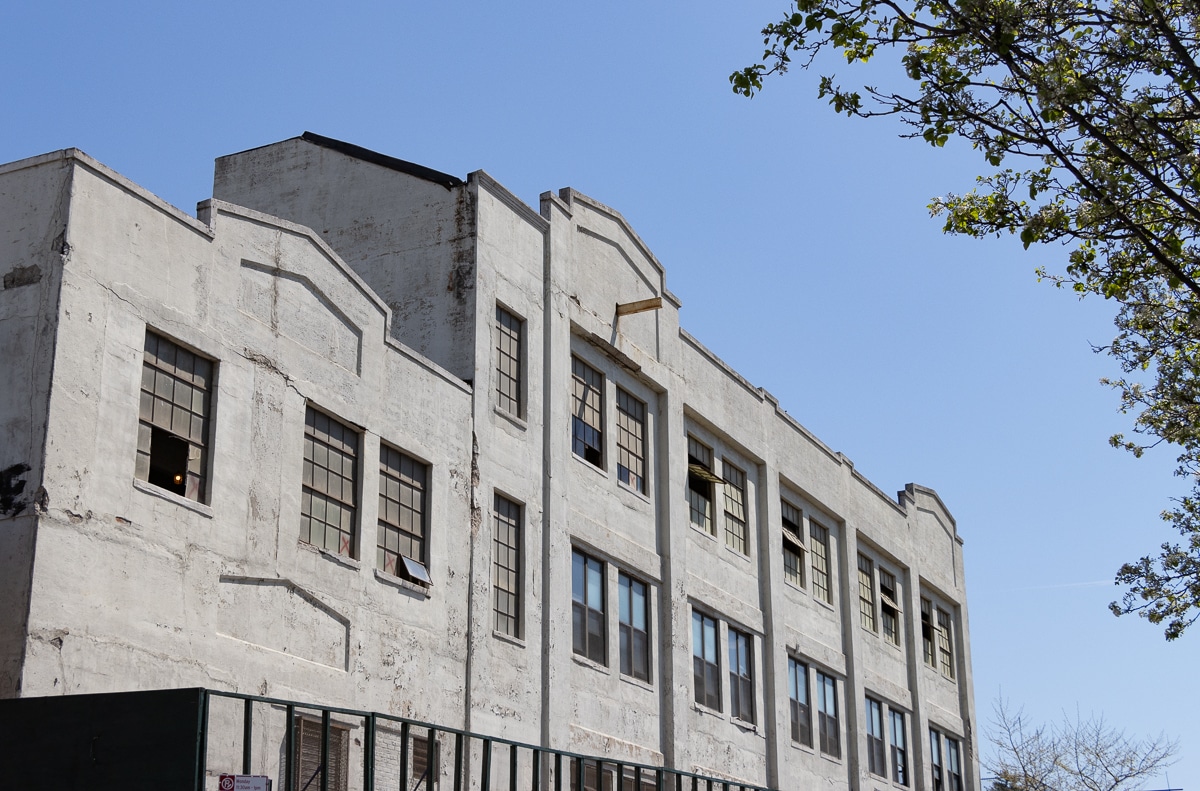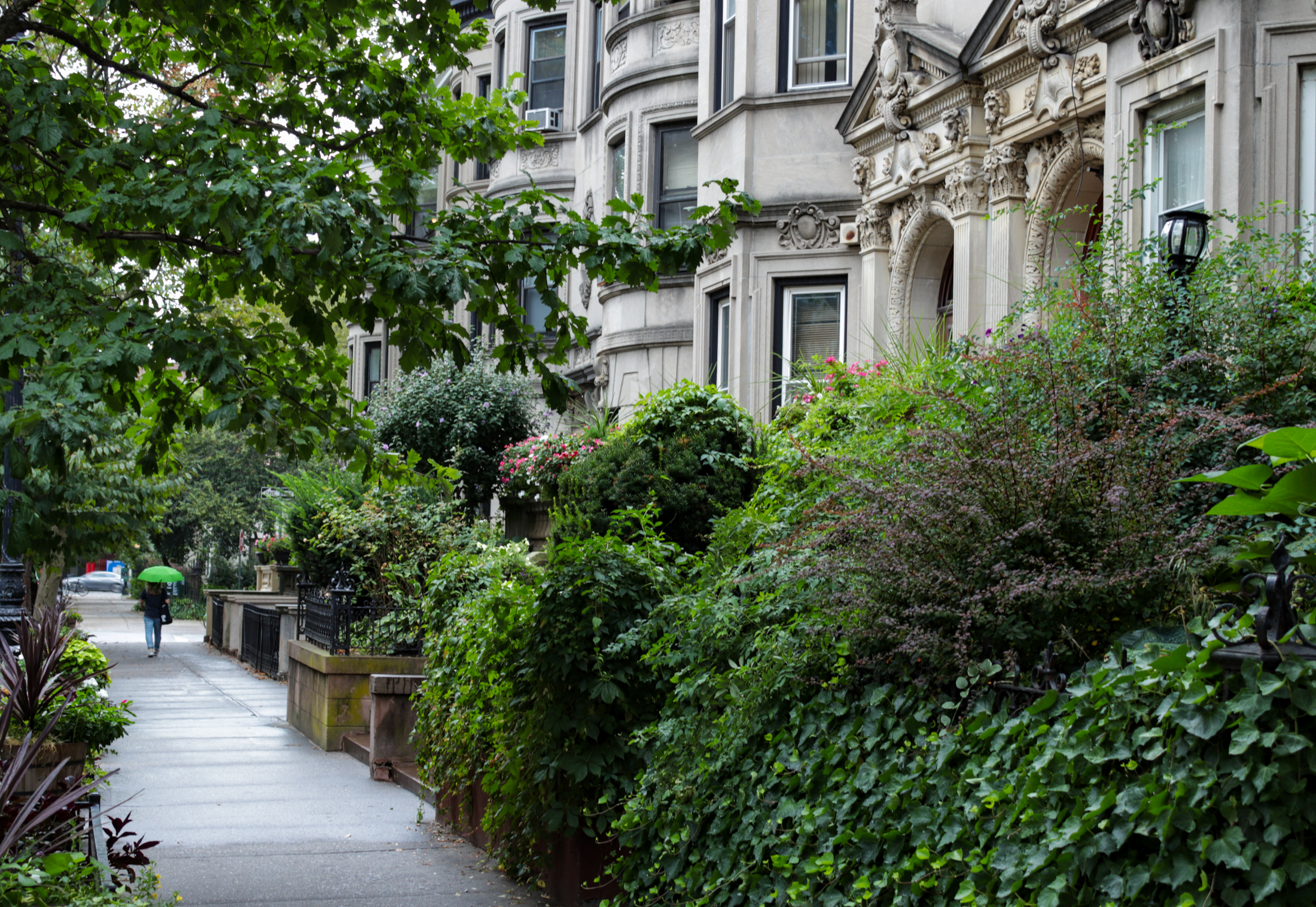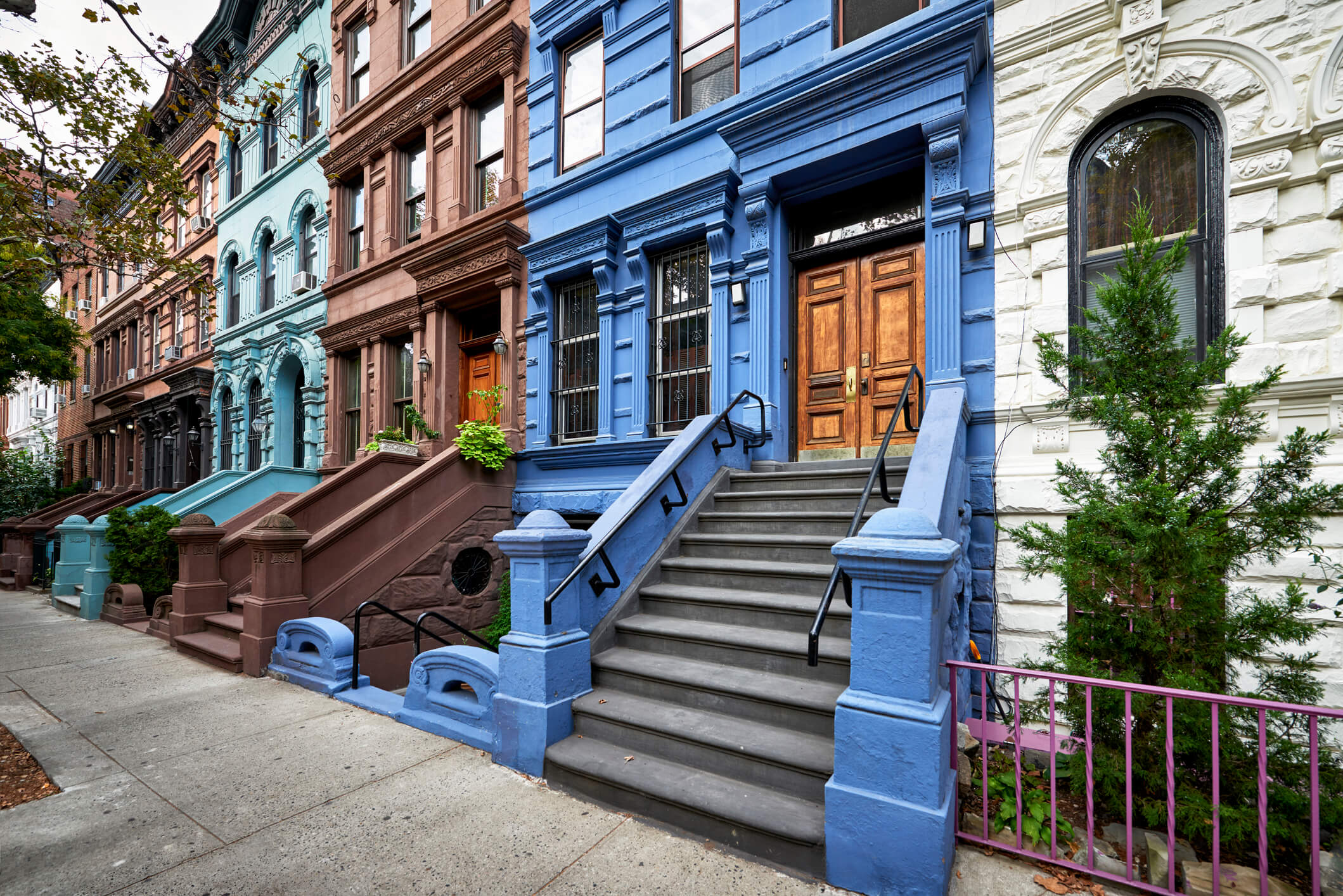Building of the Day: 587-611 Decatur Street
Brooklyn, one building at a time. Name: Row houses Address: 587-611 Decatur Street Cross Streets: Howard and Saratoga Avenues Neighborhood: Bedford Stuyvesant Year Built: 1891 Architectural Style: Queen Anne Architect: J. Mason Kirby Other works by architect: Row houses on Bainbridge Street, Bed Stuy; Park Place, Crown Heights North. Also “Lucy” the elephant building, Margate…

Brooklyn, one building at a time.
Name: Row houses
Address: 587-611 Decatur Street
Cross Streets: Howard and Saratoga Avenues
Neighborhood: Bedford Stuyvesant
Year Built: 1891
Architectural Style: Queen Anne
Architect: J. Mason Kirby
Other works by architect: Row houses on Bainbridge Street, Bed Stuy; Park Place, Crown Heights North. Also “Lucy” the elephant building, Margate City, NJ, and “Elephant Colossus” building at Coney Island (gone).
Landmarked: No, but in proposed Stuyvesant Heights East HD
The story: As related in today’s Walkabout, J. Mason Kirby was an architect and builder with a great imagination. Please read his life’s story, and the story of his amazing buildings, posted earlier this morning. Anyone who could design and construct a building shaped like an elephant, several stories tall, would have no problem with the average Brooklyn row house. When Kirby wasn’t trying to sell himself as the “elephant builder,” he was busy on homes in the Crow Hill neighborhood of Crown Heights North, and in the eastern part of Stuyvesant Heights. Although Kirby didn’t have the resume or the track record of many of our more familiar architects, his groups of houses, usually more than ten in a group, make quite an impact on their blocks, adding to the attractive and desirable streetscapes that make Brooklyn such a destination, then and now.
In 1891, Mason designed and built two groups of houses in eastern Stuyvesant Heights. One group was on Bainbridge Street, between Saratoga and Thomas L. Boyland — a pretty quiet group of Queen Anne houses, at 505-523 Bainbridge. But on Decatur, he let his imagination go wild, with an exceptionally eclectic group of houses, also in the Queen Anne style. Architectural historians have classified the row by letters, each indicating a different style, repeated as the row continues. From this classification, we can see that there is a rhythm to the placement of the four styles within the group. They are placed thusly: ABCADCABACDACBA. The four styles are represented by the “A” house – round arch parapet, “B” house – central turret, “C” house – central oriel and sunburst motif, and “D” house – a plain flat roofed house with heavy stone voussoirs over the arched second story windows.
As cool as these houses are, architecturally, a neighborhood is made up of people, and this row had its share of characters. The first residents of these houses were solidly respectable middle class folk, whose numbers included a doctor, florist, retired police official, a real estate broker, and a prominent member of the local Masonic lodge. There was one other resident of the block who was in a class of his own: a ne’er-do-well son of a wealthy man named George H. McKay, who lived at 595 Decatur Street. He was quite a piece of work for any age and any time.
Young George McKay was just trouble. Although he was a stock broker during the week, on weekends he was a member of the prestigious 23rd Regiment, Brooklyn’s most elite National Guard unit, stationed at the armory on the corner of Bedford and Atlantic Avenues. One night, in 1910, after a night carousing with friends, all in uniform, twenty-two year old McKay and five of his friends stopped in a Chinese restaurant on Broadway in Bushwick, at almost two in the morning. The place was closing down for the night, but the owner’s brother, who was cleaning up, agreed to make something for the group, and produced a feast, which they consumed. When the man presented the bill, which was for 90 cents, McKay refused to pay it. The owner, Henry Lesing, came out to confront McKay, and found a huge service revolver pointed at him, with the barrel right in his face.
“This is for you, kid.” McKay said, “Nothing doing on that check. I’ll shoot you.” Lesing, who had been in an altercation with a gun only months before, talked McKay down, telling him he’d pay McKay for the meal himself. Finally, he lowered the gun, and Lesing stayed and chatted with the men, playing the fool while his brother went looking for the police. When he returned with an officer, McKay’s buddies scattered, and McKay was arrested. He stood in his uniform in front of the magistrate at the Gates Avenue courtroom, with a grin on his face, telling the judge he didn’t think the incident was any big deal. The judge disagreed, charging him with felonious assault and for carrying a gun without a permit. He was heavily fined, and got out on a high bail. But he wasn’t through with the court system.
Two years later, in 1912, George McKay found himself before the Gates Street magistrate again. This time, he had stolen a horse and wagon from in front of a merchant’s business in Jersey City, and in a drunken good time, rode all the way home to Brooklyn. When he was arrested for being drunk and disorderly, he told the police and the magistrate that his name was Hugh Fanning, one of his friends, and a highly regarded young man in the Bedford neighborhood. He was booked, and the name was placed in the official record. He didn’t even come clean at the arraignment that night. The next day, the merchant showed up in court, and the charges were upped to grand larceny, along with the drunk and disorderly.
Fortunately, another of the real Hugh Fanning’s friends was an observer in the courtroom, and knew that McKay was lying. He went and reported to the real Hugh Fanning, who showed up the courtroom and approached the police, who told the judge. As McKay’s father was arranging the $1000 bail for the grand larceny charge, the judge asked McKay what his name was. “Hugh Fanning,” he said, and then turned and saw the real Fanning in the courtroom. The judge was furious. “Why are you lying about this, Fanning is not your real name, what is your real name?” the judge thundered. “George McKay,” he said, in a small voice. “Why did you lie?” the judge demanded to know. “I didn’t want to disgrace my father,” he said.
“But you did not mind disgracing this young man, did you?” The judge rose dramatically, and pointed to Hugh Fanning, sitting in the courtroom. The judge disgustedly ordered the court to toss George back into jail on new charges of impersonating someone, and lying to the court and the police. Meanwhile, Hugh Fanning had to go through the process of having the records changed and expunged, so his name was no longer connected with any criminal activity. I think that friendship was probably over. GMAP












What's Your Take? Leave a Comment